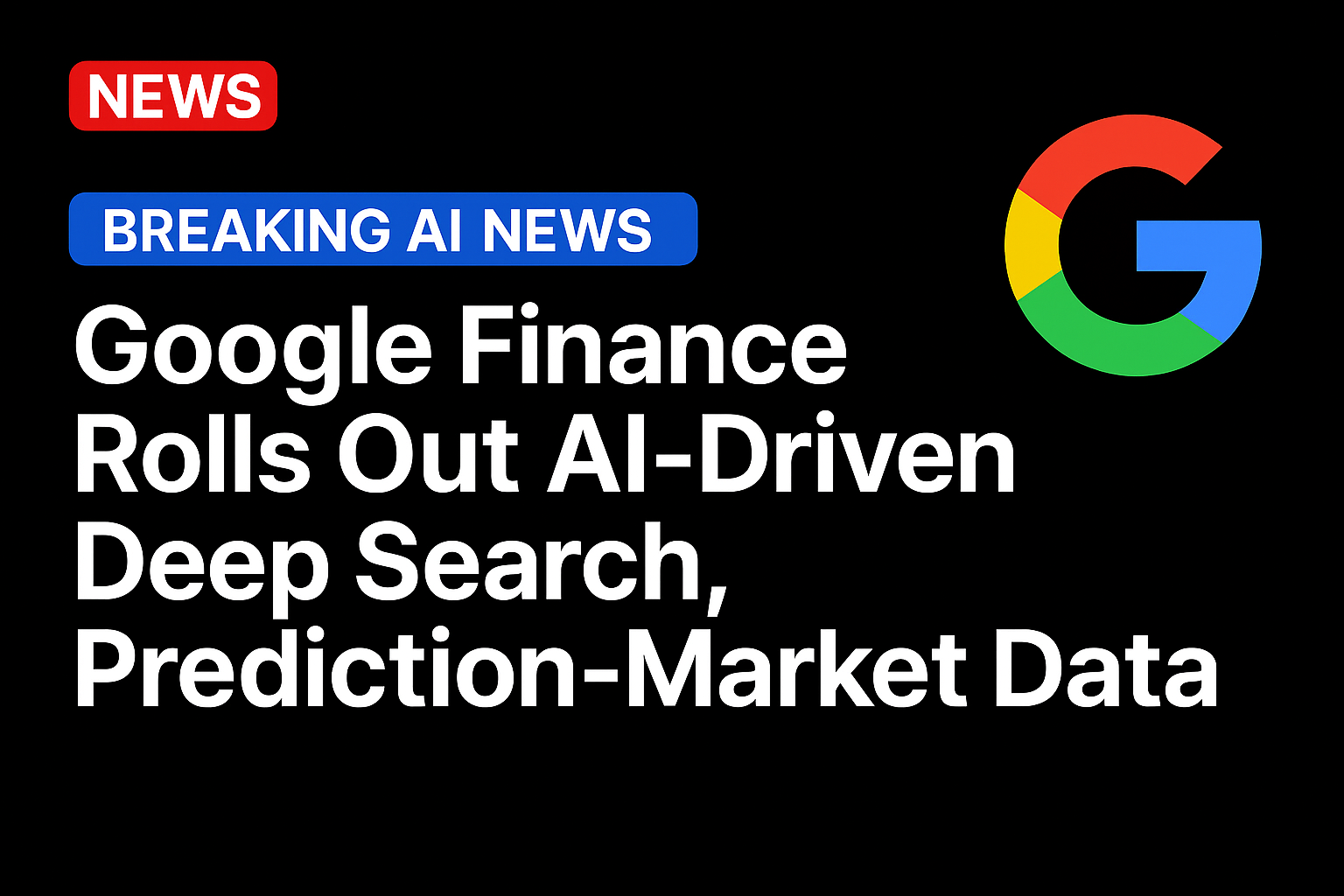
Google introduced on Thursday (Nov. 6) new AI features to Google Finance, adding Deep Search, enhanced charting and prediction-market data. The update, outlined in Google’s blog, integrates the company’s Gemini models into its finance product and broadens beyond basic stock listings and headlines.
Deep Search Adds Context to Financial Queries
This new version of Google Finance allows users to type open-ended financial questions and receive AI-generated responses that include citations and links to supporting material. Deep Search performs multiple lookups across the web, aggregates results and displays a “research plan” explaining how the answer was formed. Users can open each reference or refine the query for more detail.
The feature is being tested through Google Labs and will expand to AI Pro and AI Ultra subscribers in the coming weeks. Google also confirmed an initial launch in India with English and Hindi support.
Earlier this year, PYMNTS reported that Google was testing a redesigned Finance interface with AI-powered charting and wider data coverage. Those features are now live. The update adds technical indicators, historical overlays and sector-level comparisons, allowing users to analyze market patterns in one view.
Prediction Markets and Live Earnings
Google Finance now incorporates data from Kalshi and Polymarket, which provide market-based probabilities for outcomes such as inflation rates, GDP growth and interest-rate decisions. The inclusion gives users a view of how expectations change over time and where market sentiment diverges from analyst forecasts.
However, the reliability of such markets remains debatable. Because participation volumes are still relatively small compared with major exchanges, price movements can be influenced by limited liquidity or concentrated bets. While prediction markets can capture near-term sentiment effectively, they may overstate volatility during periods of uncertainty.
Generative AI in Financial Workflows
The changes reflect a broader trend in finance. As PYMNTS reported, companies are adopting “explainable, auditable AI that enhances existing workflows and decision-making rather than replacing core systems.” Finance teams are using reasoning models to speed forecasting, reconciliation and reporting while maintaining oversight.
Several institutions have developed internal tools for the same purpose. Morgan Stanley built an assistant with OpenAI that lets advisers search its research archive in natural language and generate compliance-approved summaries. JPMorgan Chase created an in-house platform, LLM Suite, to condense earnings transcripts and automate market updates across its asset-management division. Both systems are private and draw on proprietary data.
Google Finance’s update comes as other financial data platforms adopt similar AI tools. Bloomberg LP has expanded its terminal with generative-AI summaries and natural-language search. OpenAI and Anthropic are also testing finance-relevant integrations within conversational systems that draw from public filings and macro-economic data.
The rollout also comes as specialized AI providers deepen their focus on financial applications. Anthropic recently introduced Claude for Financial Services, designed to help institutions analyze portfolio data, compliance records and regulatory filings with tighter control over data access. Perplexity AI also showcased similar capabilities in its enterprise suite, demonstrating how generative search can support due diligence and research workflows across banking and capital markets.
While Google updates sound very promising for retail and institutional investors alike, studies have found that reasoning models lag in handling visual and numerical context, which is essential for financial analysis. It’s important to note that AI-generated summaries can assist but should not replace manual verification of filings, data tables, and structured disclosures.
Source: https://www.pymnts.com/




